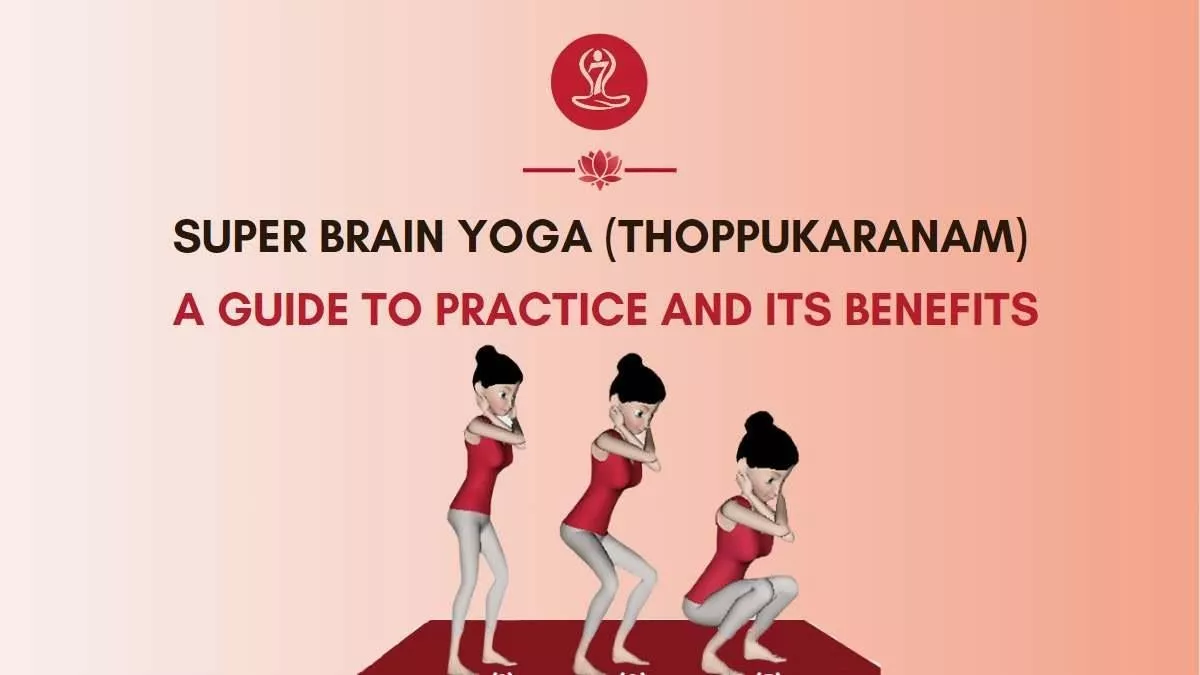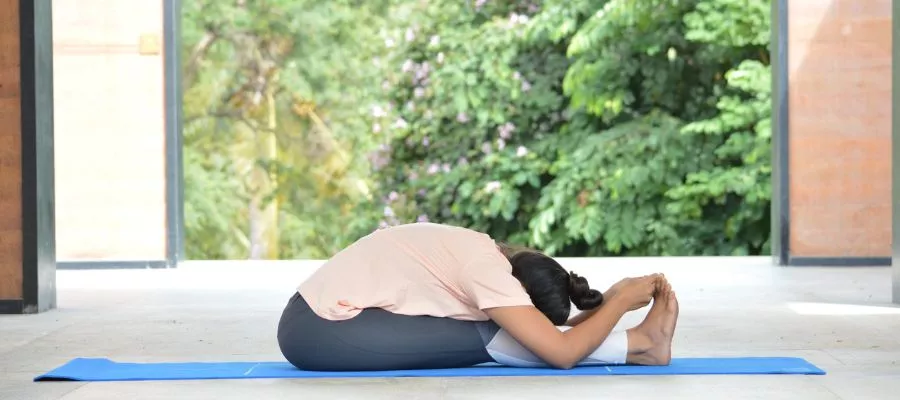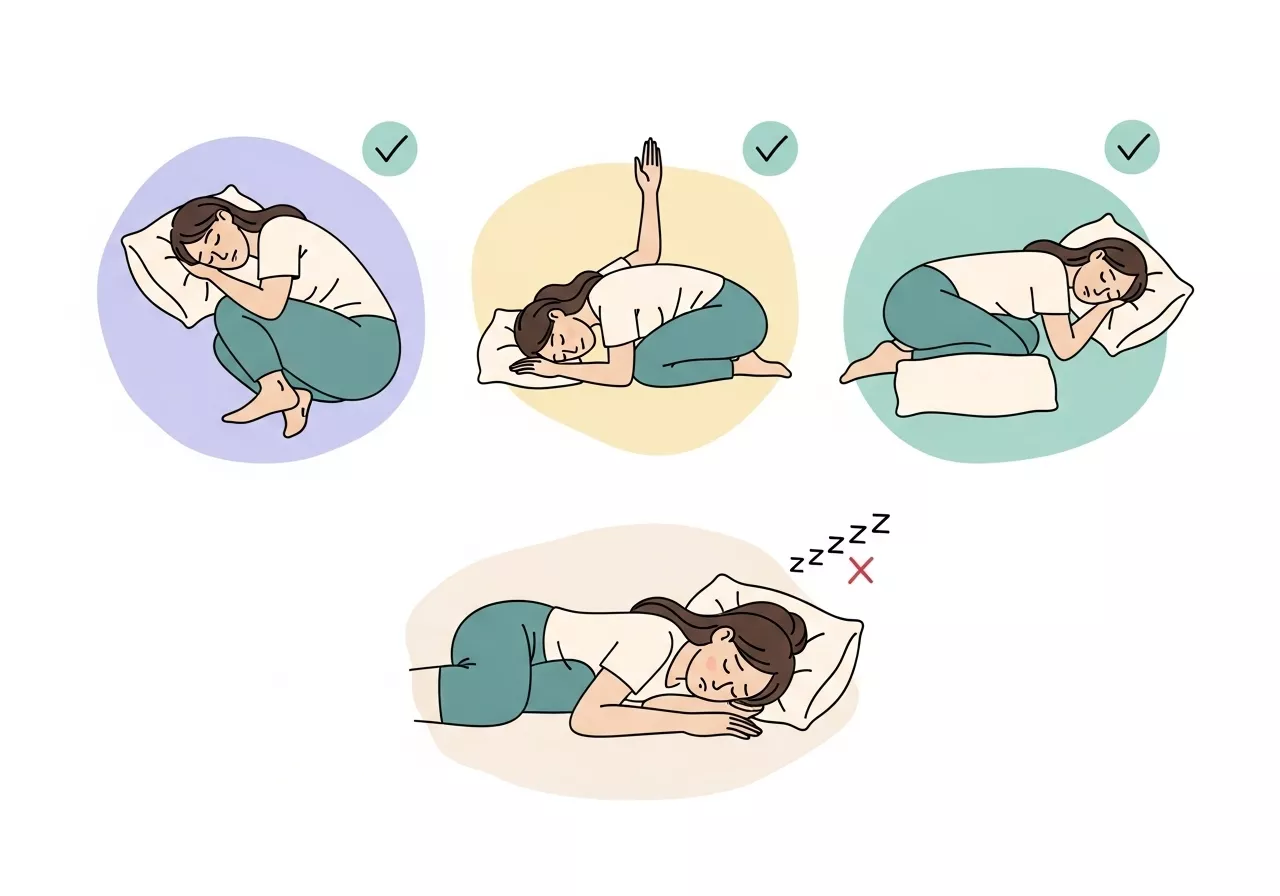By combining physical movements like squats with acupressure techniques, proponents assert that this practice can stimulate brain activity and foster better focus, memory, and overall mental clarity.
While advocates extol its benefits, skeptics question the scientific basis behind these claims.

In this comprehensive article, we’ll dissect the principles of Super Brain Yoga, explore its purported benefits, delve into the available research, and provide step-by-step instructions for practicing it safely.
If you’ve been wondering whether this practice lives up to its reputation, keep reading as we examine the evidence and provide a nuanced perspective on its potential impact.
What Is Super Brain Yoga?
At its core, Super Brain Yoga is a brief, straightforward exercise that integrates breathing techniques, light physical movements, and stimulation of specific acupressure points to improve cognitive performance.
Originating from principles rooted in ancient yogic and energy-based practices, this technique was popularized in modern times by Master Choa Kok Sui, a proponent of pranic healing—a system that emphasizes manipulating energy to improve overall well-being.
The key movements of Super Brain Yoga involve holding the opposite earlobes while performing squats in a controlled and rhythmic manner.
It is believed that these actions activate the brain’s energy centers (chakras) and stimulate neural pathways, improving the balance between the left and right hemispheres of the brain.
This enhanced brain activity is said to contribute to better focus, memory retention, emotional regulation, and mental clarity.

The practice is appealing because of its accessibility: it can be performed by individuals of all ages and fitness levels in just a few minutes a day.
However, the intriguing question remains: Does it actually work? Let’s first examine how it is supposed to function.
How Does Super Brain Yoga Work? The Theories Behind the Practice
Super Brain Yoga’s purported mechanism of action combines elements of acupressure, neuroplasticity, and energy flow theories.
Here’s a breakdown of the primary concepts behind how it works:
1. Activating Acupressure Points
The earlobes are said to contain acupressure points that correspond to various brain regions.
By gently squeezing these points with the thumb and forefinger, proponents claim you can stimulate specific neural pathways, leading to improved brain function.
This principle aligns with traditional Chinese medicine, which posits that energy pathways, or meridians, connect various organs and systems in the body.
2. Enhancing Brain Hemispheric Balance
When you cross your arms to hold the opposite earlobes, you engage both hemispheres of the brain.
The left hemisphere (associated with logical thinking and language) controls the right side of the body, while the right hemisphere (linked to creativity and spatial awareness) controls the left side.
This cross-lateral movement is thought to synchronize the two hemispheres, promoting better communication and balance.
3. Boosting Oxygenation and Blood Flow
The squatting motion increases blood circulation, particularly to the brain.
As you inhale deeply while squatting and exhale as you rise, you enhance oxygen supply, which is crucial for optimal cognitive performance.
4. Stimulating Energy Flow
Super Brain Yoga borrows from the yogic understanding of energy centers or chakras.
Practitioners believe the technique helps balance the body’s energy flow, aligning it with mental clarity and emotional stability.
While these theories sound compelling, the question remains whether there is scientific evidence to back them up. Let’s dive into the benefits and explore the research.
The Potential Benefits of Super Brain Yoga
Supporters of Super Brain Yoga claim that practicing it regularly can yield a wide range of benefits.
While many of these claims are anecdotal, preliminary research and reported success stories suggest there may be merit to the practice.

Below are some of the potential benefits:
1. Improved Cognitive Function
Super Brain Yoga is primarily known for enhancing brainpower. Practitioners report sharper focus, quicker decision-making, and improved problem-solving skills.
The activation of acupressure points and increased blood flow to the brain may explain these cognitive benefits.
2. Enhanced Memory and Recall
Many people claim that Super Brain Yoga helps with memory retention and recall.
This benefit can be particularly appealing to students, professionals, and older adults who want to maintain mental sharpness.
3. Better Focus and Attention
One of the most touted advantages of Super Brain Yoga is its ability to enhance focus and concentration.
This makes it a potentially useful tool for individuals with ADHD or those who struggle with staying attentive during tasks.
4. Stress Reduction
The meditative aspect of Super Brain Yoga, coupled with rhythmic breathing, can help reduce stress and anxiety.
The activation of alpha brainwave states is said to create a sense of calm and relaxation.
5. Improved Emotional Regulation
Practitioners report feeling more emotionally balanced and in control after performing Super Brain Yoga.
The synchronization of brain hemispheres may play a role in better managing emotions and improving mood stability.
6. Accessibility for All Ages
Since it requires no special equipment or prior experience, Super Brain Yoga is accessible to virtually anyone.
It’s a low-impact exercise suitable for children, adults, and seniors alike.
While these benefits sound promising, let’s explore whether scientific research supports these claims.
What Does the Research Say?
Research on Super Brain Yoga is still in its early stages, with limited studies available. However, the findings so far offer a glimpse into its potential efficacy.

1. Improved Cognitive Abilities in Children
A study published in the Journal of Ayurveda and Integrative Medicine examined the effects of Super Brain Yoga on children with ADHD.
The results indicated that the practice led to improvements in attention span, memory, and overall behavior.
2. Enhanced Cognitive Function in Adults
A 2019 study in the International Journal of Yoga investigated the impact of Super Brain Yoga on cognitive performance.
Participants who practiced the technique for two weeks demonstrated notable improvements in memory recall and mental clarity compared to a control group.
3. Reduced Stress Levels
While direct research on Super Brain Yoga and stress is limited, studies on similar mind-body practices like rhythmic breathing and acupressure suggest that they can lower cortisol levels and promote relaxation.
It’s important to note that while these studies are encouraging, more rigorous, large-scale research is needed to validate the claims surrounding Super Brain Yoga.
How to Practice Super Brain Yoga: A Step-by-Step Guide
If you’re interested in trying Super Brain Yoga, follow these simple steps to get started:
Step 1: Prepare Your Body and Mind
- Stand upright with your feet shoulder-width apart.
- Place your tongue on the roof of your mouth, just behind your front teeth. This is believed to complete an energy circuit in the body.
Step 2: Position Your Hands
- Cross your arms across your chest.
- Use your left hand to gently hold your right earlobe, with your thumb on the front and your forefinger on the back.
- Use your right hand to hold your left earlobe in the same manner.
Step 3: Perform Squats
- Inhale deeply through your nose as you squat down, keeping your back straight and your hands firmly holding your earlobes.
- Exhale slowly through your nose as you stand back up.
- Repeat this motion for 3 to 5 minutes.
Step 4: Practice Regularly
- Perform the exercise daily for optimal results, starting with a few minutes and gradually increasing as you become more comfortable.
Precautions and Safety Tips
While Super Brain Yoga is generally safe, there are a few precautions to keep in mind:
- Consult a healthcare provider if you have any medical conditions, particularly those affecting your knees, back, or heart.
- Avoid overexertion—perform the exercise at a pace and intensity that feels comfortable.
- Pregnant individuals or post-surgery patients should refrain from practicing without professional guidance.
- Always practice on a flat, stable surface to minimize the risk of injury.
Does Super Brain Yoga Really Work? Final Thoughts
The effectiveness of Super Brain Yoga remains a subject of debate, with anecdotal evidence and limited studies pointing to its benefits.
While many practitioners report enhanced cognitive function, memory, and emotional well-being, skeptics argue that the scientific evidence is insufficient.
What is clear, however, is that Super Brain Yoga is a low-risk, accessible practice that may complement a healthy lifestyle.
Whether you’re seeking better focus, improved mental clarity, or simply a few minutes of mindful exercise, Super Brain Yoga may be worth exploring.
If you decide to give it a try, remember to practice consistently and approach it with an open mind.
While it may not be a miracle solution, the combination of movement, breathing, and focus may provide valuable benefits to your overall mental and physical health.



